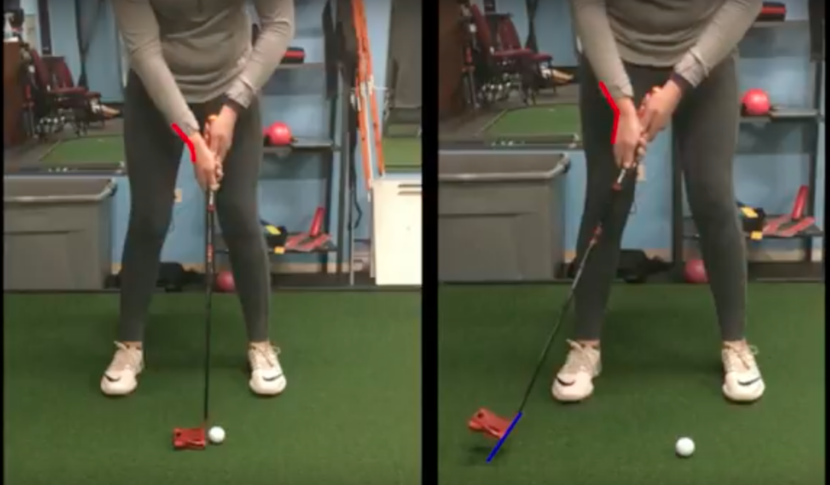TRY THIS NEW GRIP TO FEEL THE PUTTER AND SINK MORE PUTTS
Many of you remember Brooks Koepka winning the U.S. Open in 2017 but what you may not remember is that he made a change to his putting grip just before the event. He put his right forefinger behind the shaft of the putter. In addition to winning the U.S. Open, Koepka went from being 46th on the tour in overall putting performance in 2016 to 11th in 2017. Ian Poulter, (already a good putter as proven by all those putts he made during the Ryder Cup) was so impressed by the change in Koepka’s putting that he also adopted the same grip with putting. I am going to tell you 3 reasons why this is a good idea, and also provide you with a video that shows you how to achieve better putting distance control by feeling the putter correctly.
If you look closely at this video, you can see his right finger pointing down the grip:
1. If the finger is placed firmly enough against the back of the putter grip, it will lock the right wrist and prevent the wrist from breaking down during the backstroke. If the wrist is allowed to break down (cock back on itself), the putter face opens way too much and it is very difficult to square the putter face up at impact. We do want the putter face to open slightly, which it will do with this technique, so that the putter can close slightly while the ball is on the putter face.
2. It allows the shaft of the putter to work properly. Good putters actually allow the putter shaft to bend slightly on the backstroke, which I will call load or loading the shaft. When this load is created, the putter shaft has much more energy. The putting stroke does not have to be as long in order to hit a putt the same distance as a putter shaft that does not have much load. The load is best created and released by taking the putter back with the right arm and forward with the left arm. (this will be the topic of another post) In order for load to be created, the shaft must have something to load (bend) against. If the right wrist does not break down during the backstroke, the shaft will load against the resistance of the right wrist. The harder the backstroke (not longer), the more the load.
3. The 3rd, and possibly the most important advantage of placing the right forefinger behind the shaft is feel. Feel means different things to different people. That is why it is so important when we are talking about the golf swing or the putting stroke to define our terms. There are different ways to feel the putting stroke. They all require you to learn how this feel correlates to how far the ball will travel. If we hit the putt without load, we have to learn how hard to either push the putter with our right arm or pull the putter with our left arm. I have found that this requires much more practice than learning to feel the load. The load, or bending of the shaft on the backstroke, can be easily felt in 2 ways. If you use a conventional putting grip and don’t break your right wrist on the backstroke, you can feel this load just below the grip. Close your eyes and it will be a lot easier to feel the load. This load does not create feel in the putter head. Trying to feel the putter head creates a lot of problems in that the golfer tends to try to manipulate the putter head. If you put your right index finger behind the shaft forcefully, you can easily feel the load on your fingertip. If you look at the hole while you are taking your practice strokes, you can feel how much load correlates with the distance you want to hit the putt. This allows feedback to the brain so that you can learn distance control much more quickly. The transition to the forward stroke must be quick enough so that the load of the putter shaft does not dissipate too early. This is accomplished by taking the putter back with your right arm and before the right arm stops, to start forward with the left arm. This allows you to maintain the load until impact. When the hands slow down or stop near impact, the putter shaft will release the load, and a correct release (another future blog) will allow you to hit a perfect putt.
In the following video I will demonstrate how you can adopt this new putting grip and illustrate why it can help you improve your putting average just like it did for Brooks Koepka.

